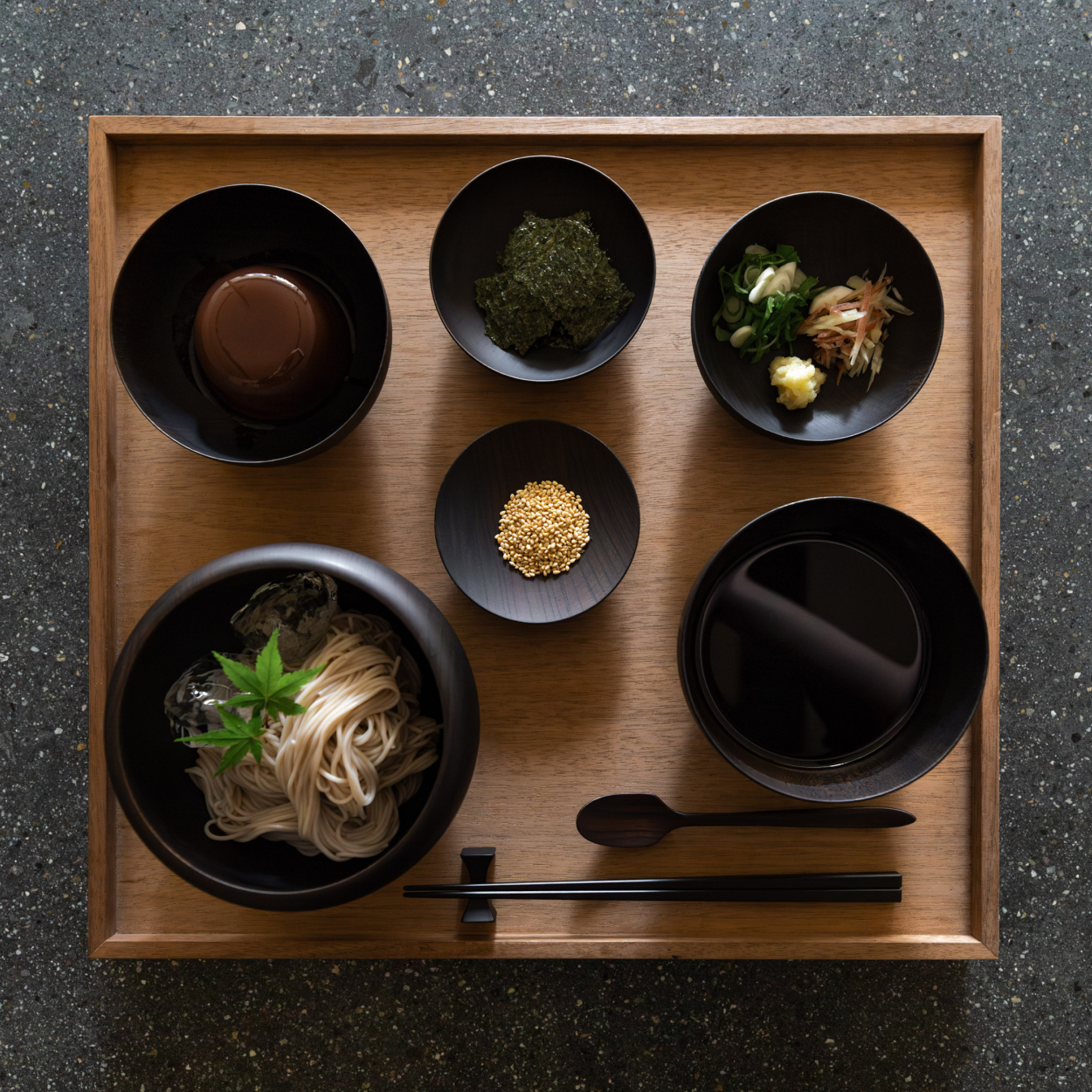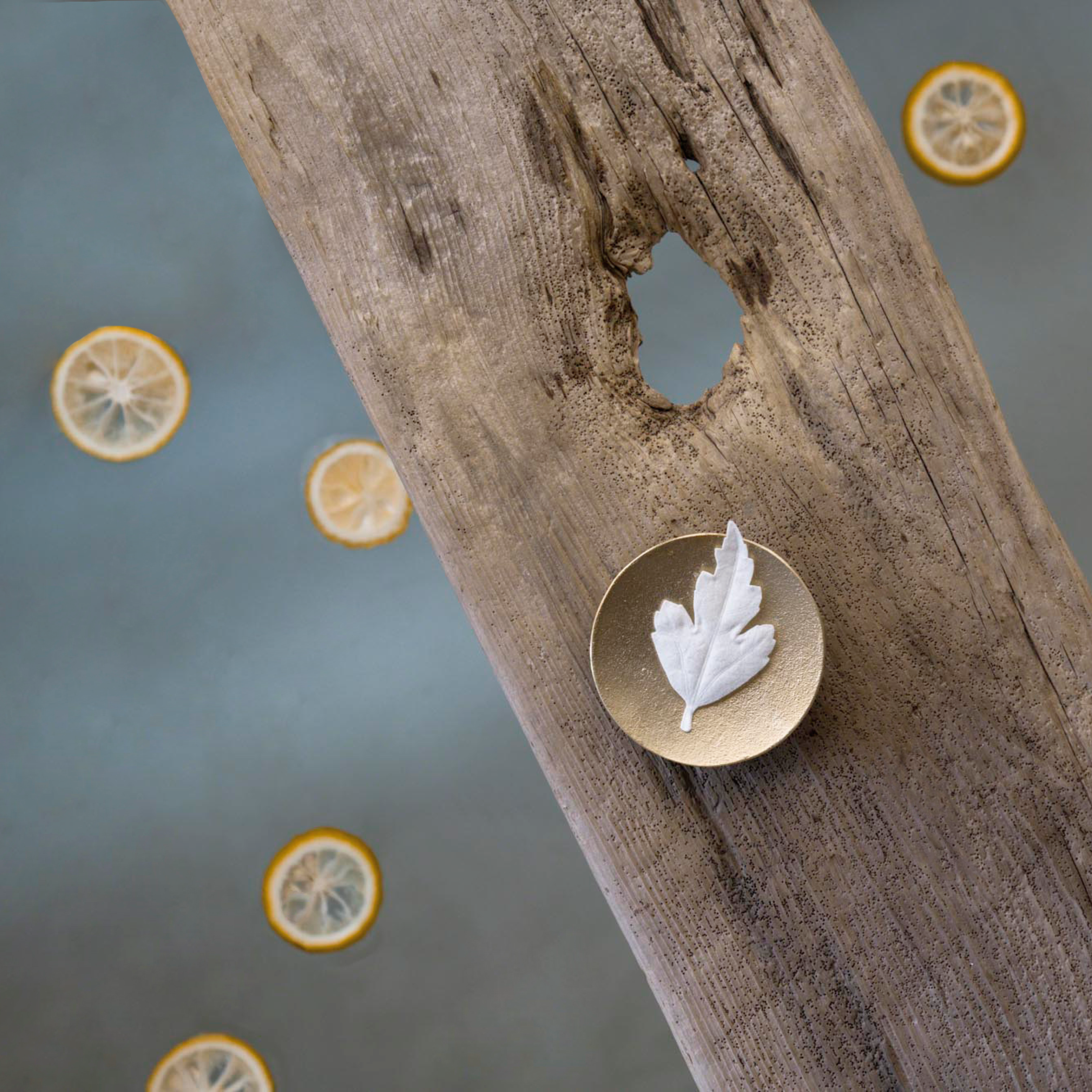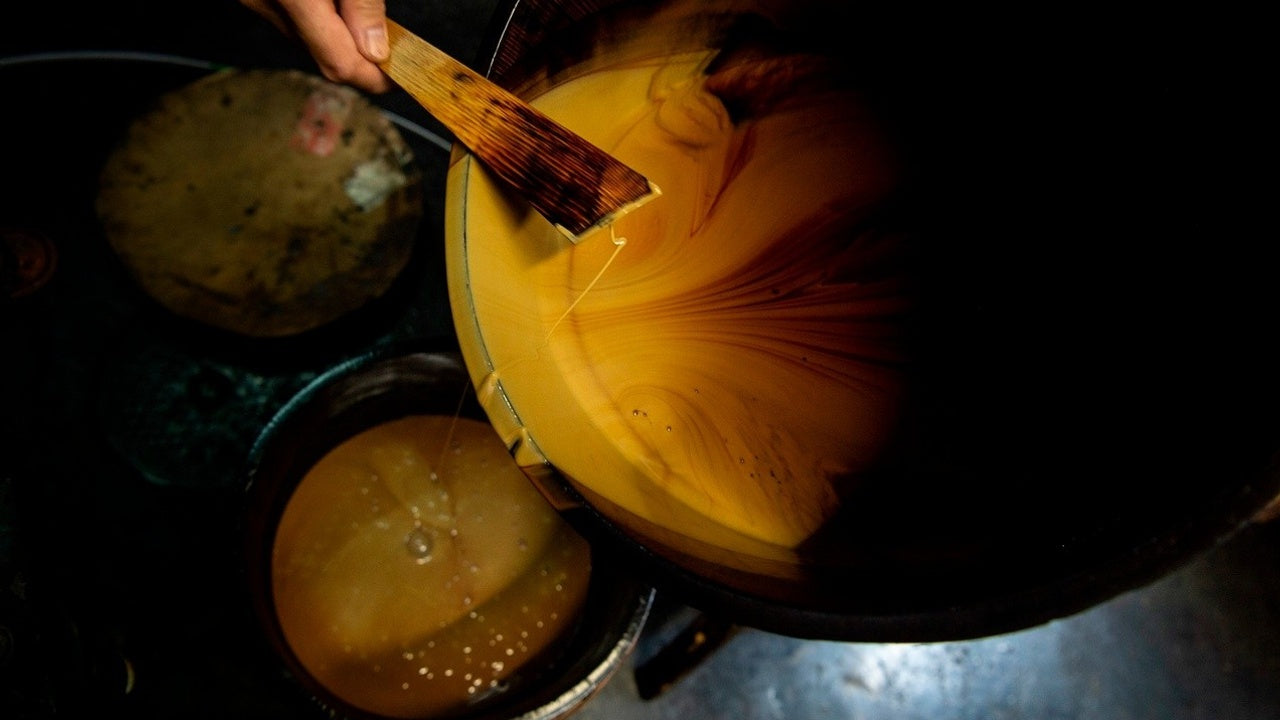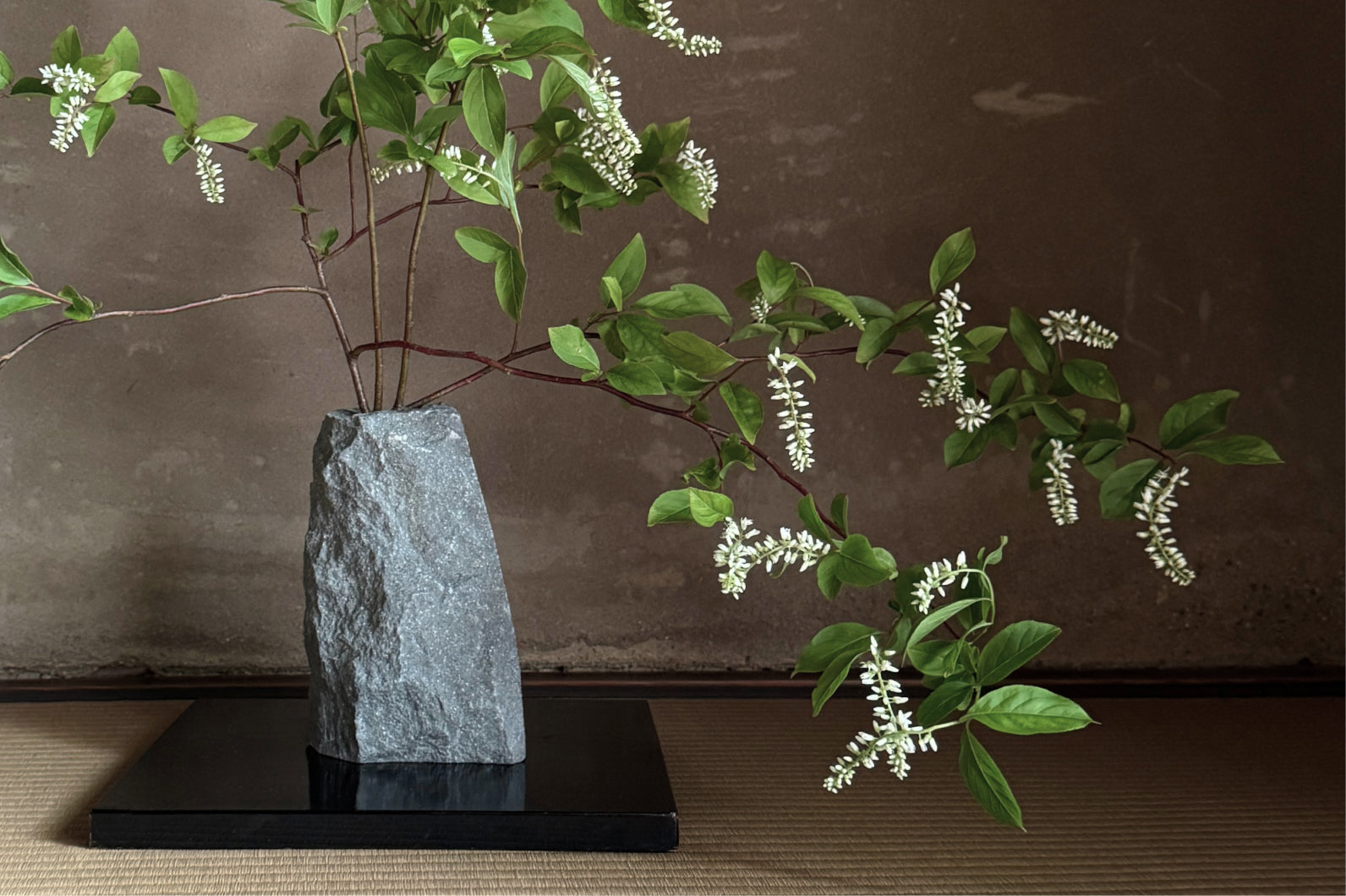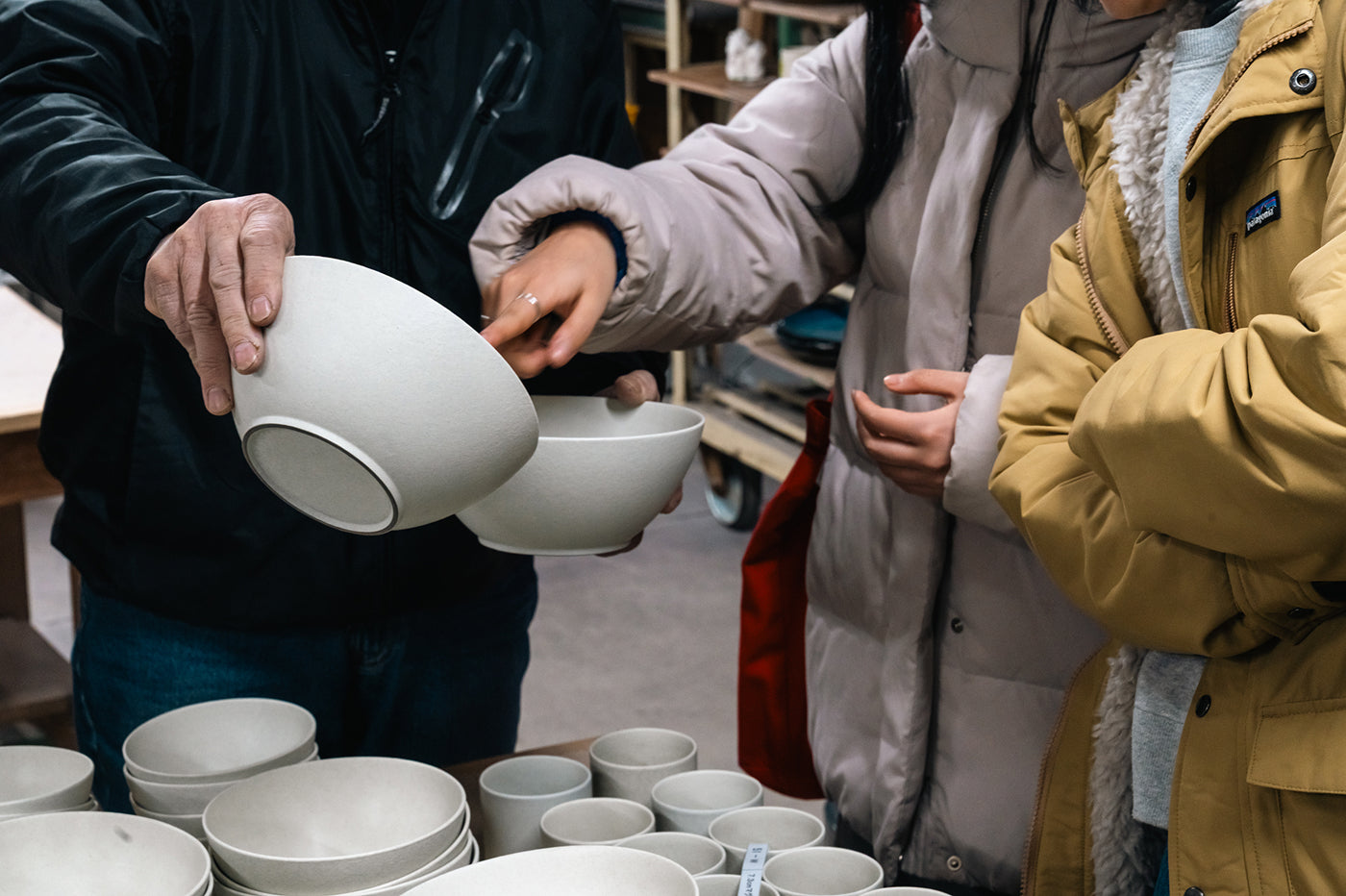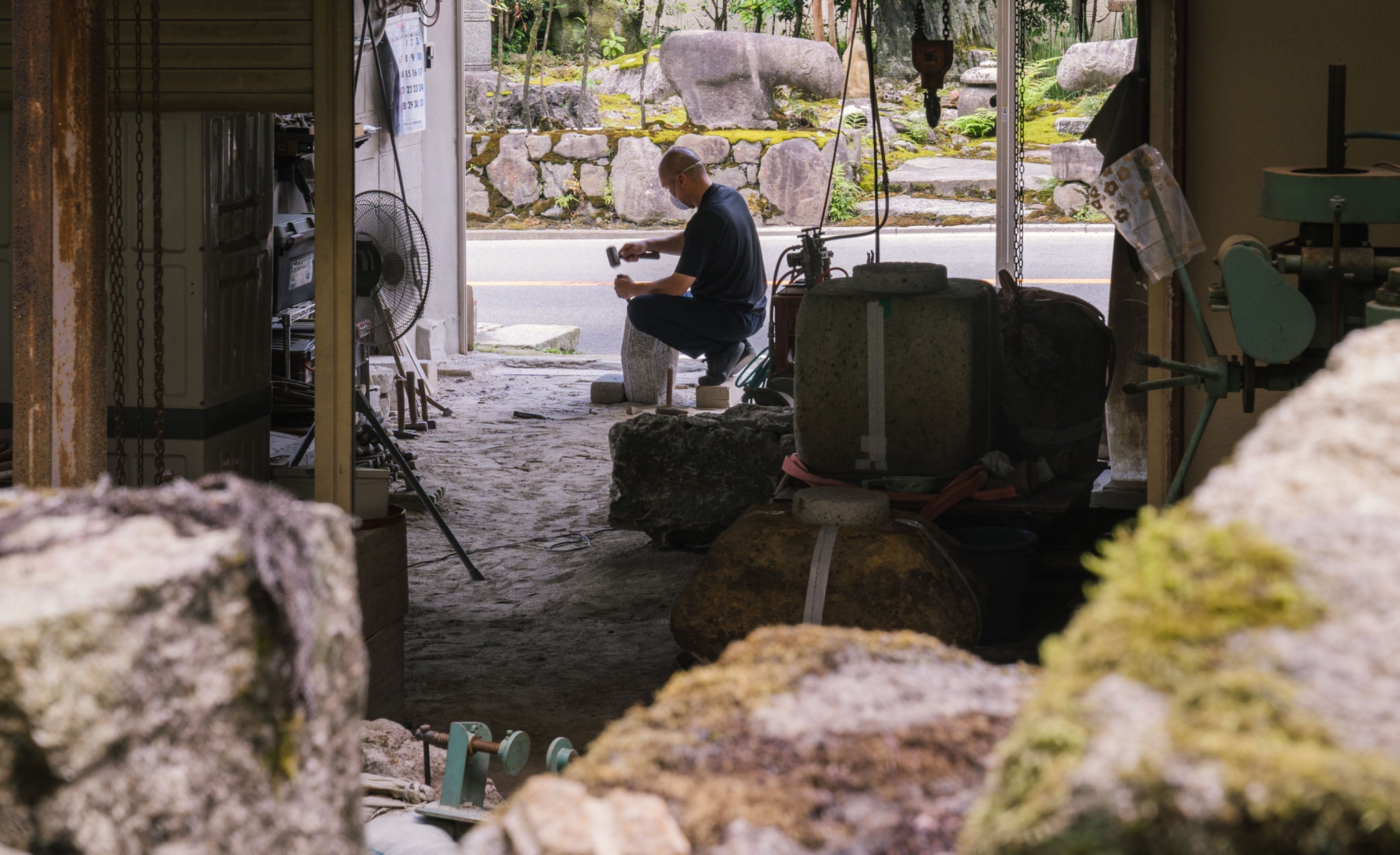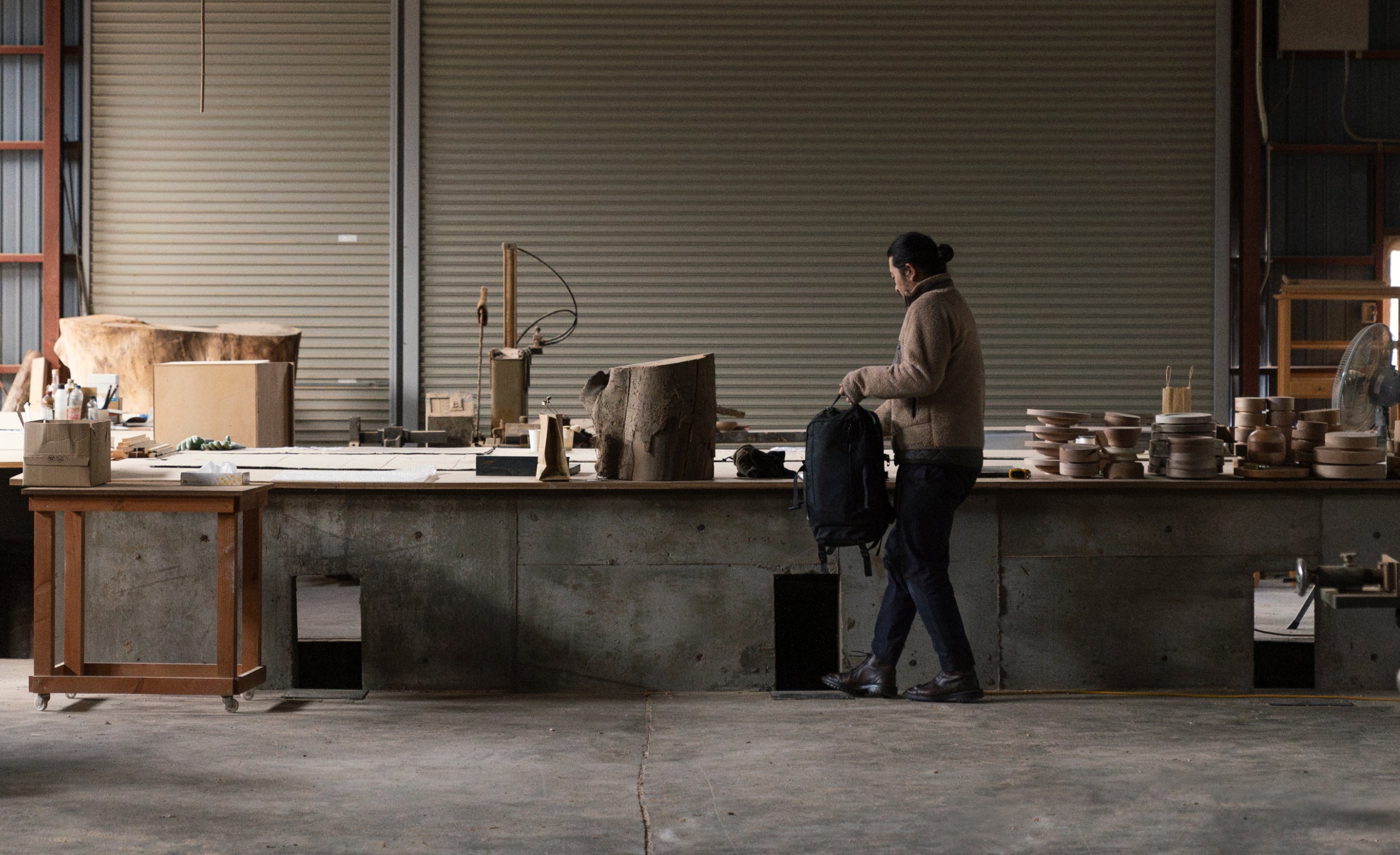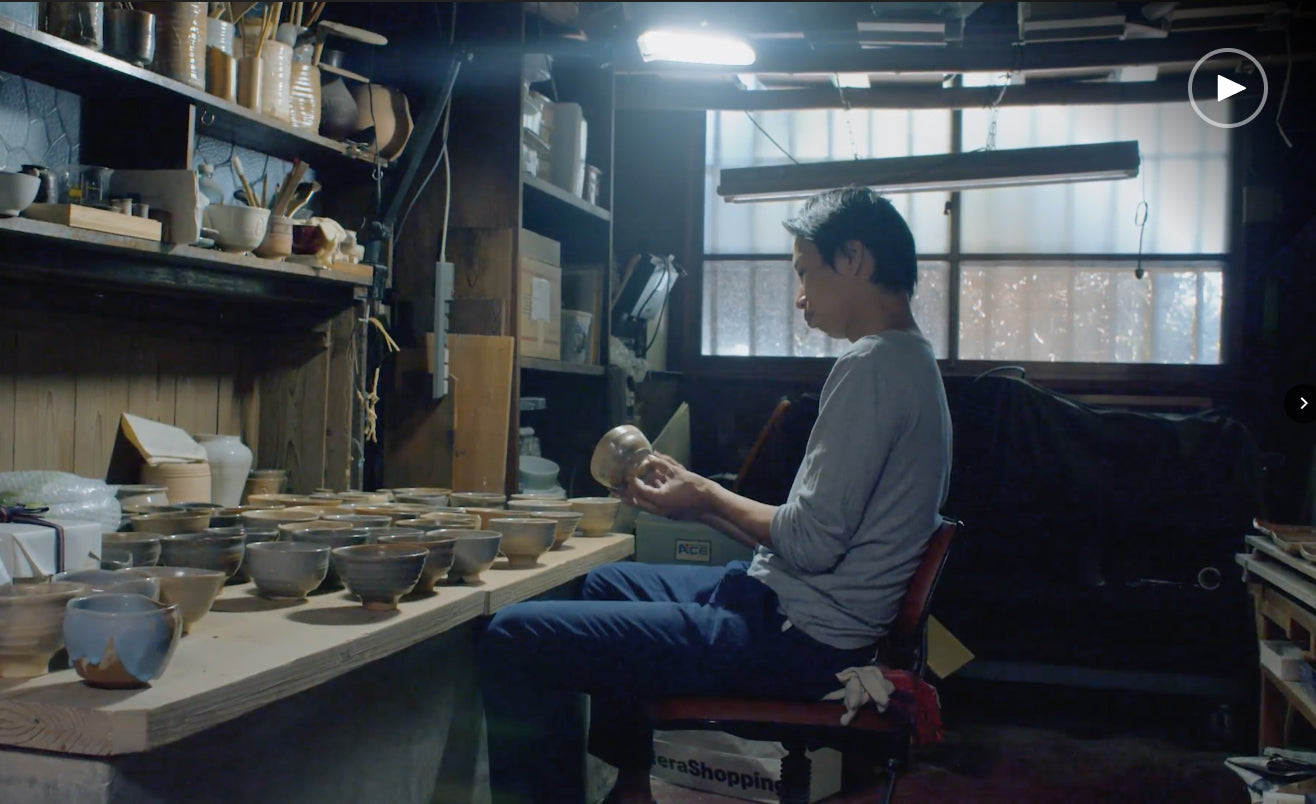Urushi lacquer is the sap of the urushi tree. And it is the fundamental ingredient of kintsugi-repair. While "kin" of kintsugi, points to gold, it is in fact urushi that does all of the hard work. Urushi is what repairs the wares.
HARVESTING
Between Summer and Autumn, horizontal incisions are made in the bark of urushi trees that are at least 15 years old to harvest its glossy sap. From a single tree, only 200ml (0.8 cups) can be harvested, so as you can imagine, we are very respectful of the urushi that is made available to us.
REFINING
After the urushi has been raked, it is is aged, then refined by removing foreign particles and to increase its viscosity. The kiurushi or raw urushi, that is included in our Kintsugi Kits, is this purest form of urushi. All other types of urushi product requires unique additional steps. For example, kuroroiro takes on its black color by adding iron.


APPLICATIONS
Known for its anti-bacterial and anti-pest properties, urushi has been applied to toys and amulets, architectural structures, home furnishings, and tableware for thousands of years. Technically said, urushi doesn't dry, but rather hardens, by intermingling with the water content in the air under specific conditions: the temperature must be around 25°C / 75°F and the humidity at around 80%.


KINTSUGI
Urushi lacquerwork technique, including kintsugi, requires that only a very thin layer of urushi is applied at one go so that it can harden properly without shrivelling or dribbling. This is why kintsugi-repair can take more than three months to complete. Each layer of urushi strengthens the breakage, and slowly fills the microscopic nooks and crannies to ensure a perfectly smooth final layer. Urushi is the workhorse. It is the sole reason for kintsugi's durability and versatility. It is said that urushi matures into its strongest form 100 years after it has been applied. The gold finish is simply decoration.
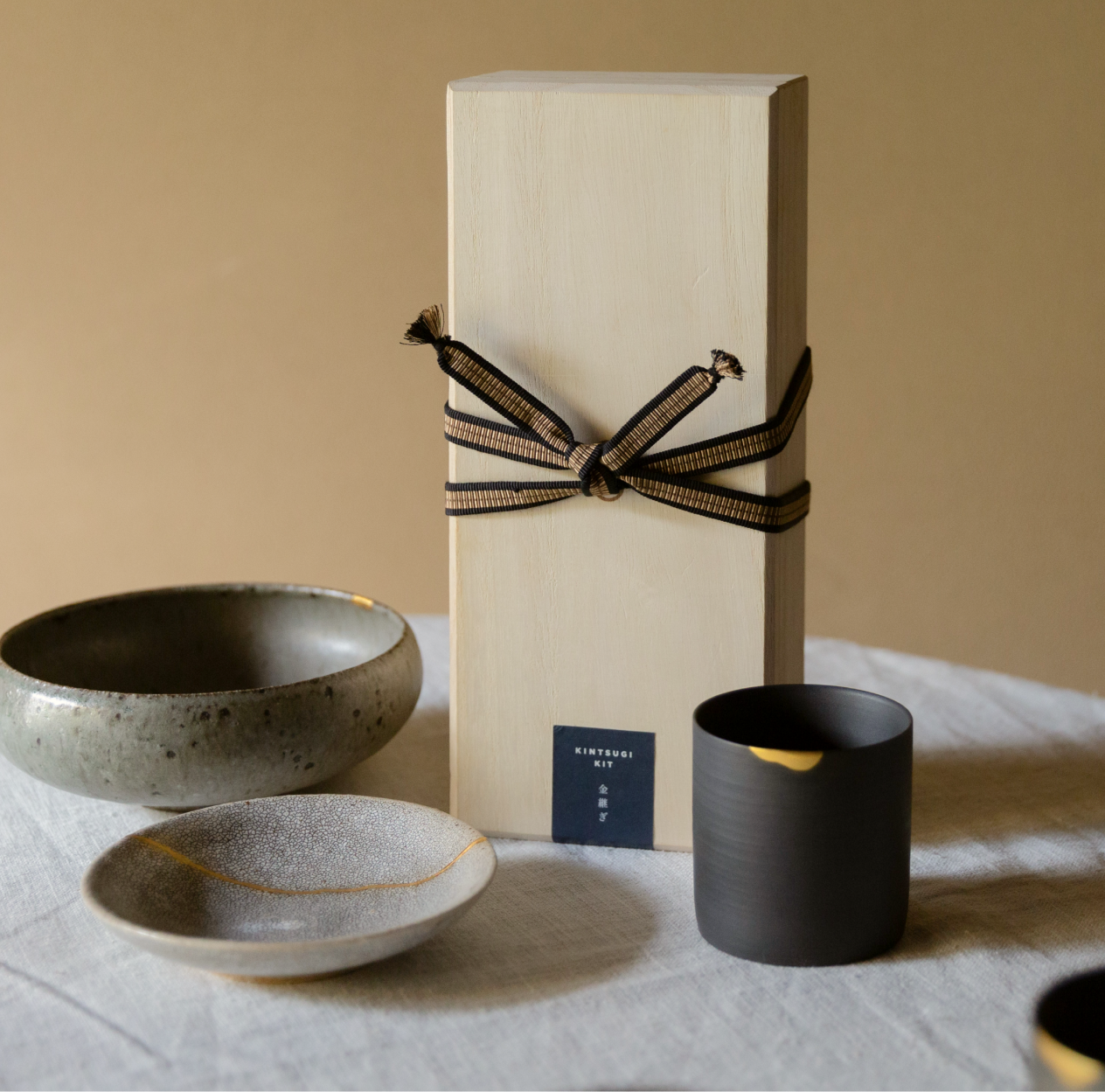

FAMILY BUSINESS
We work with the Tsutsumi Family to create our DIY kintsugi kits. Since 1905 they have dedicated their lives to the craft of urushi refinery and are now the largest distributor of Japan-made urushi. The entire aging, refinement, and packaging process is done by hand, and in very small batches. Viscosity, color, rate of maturation are specially-tailored to each artisan's needs.
The current successor, Takuya, has been inspiring us through his many projects advocating for the survival of the struggling industry. For centuries, urushi tableware dawned Japanese tables, yet over just these past few decades, fast-fashion wares have taken its place. It is said that only 1% of the world's urushi is currently being harvested in Japan. Takuya's urushi education programs, including planting urushi trees in the mountains of Kyoto, help us to create a more meaningful relationship with the entire lifecycle of urushi: from planting, to growing and caring, to harvesting and creating.
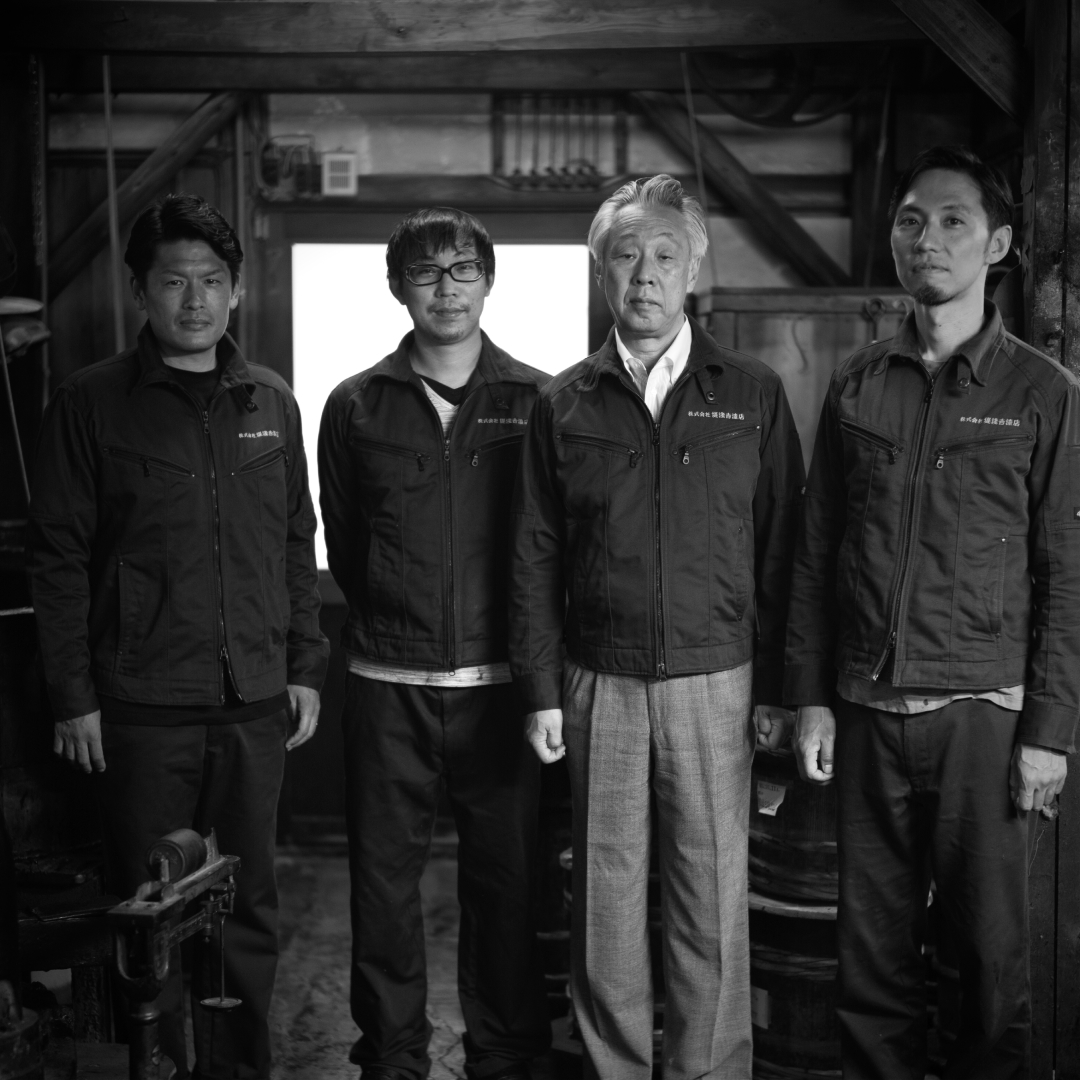
Tsutsumi Family
Takuya Tsutsumi (right)
OUR FORESTS
The mountains of Japan were zoukibayashi, a diverse ecosystem home to hundreds of varietals of trees alone. Urushi trees were one of the many. However, with Japan's post-WWII fervor of high-paced economic growth, cedar began to blanket mountain slopes. The multicultural landscape of our forests became that of mono-cropping to keep up with the demands of the city. But in recent decades, the domestic timber industry has experienced dramatic decline with both the incoming of inexpensive foreign lumber imports and an aging population. And so we are left with fabricated forests all across the Japanese countryside that are experiencing severe malnutrition.


Photo credit: Naoki Miyashita
We are now faced with an opportunity to make our forests thrive again. With indigenous water-retentive tree varietals that not only create a deep network of roots but also serve as ingredients and materials for our daily lives. As humans we are just one part of the natural world. The secret to fruitful living very much lies in the health of our mountains. While the challenges are daunting, one thing we know we can do right now is to choose kintsugi to repair our wares. Kintsugi is a satisfying and beautiful form of repair that celebrates the unique story of the wares that make our house a home. Our use of urushi serves as an important scheme to create the demand that's required to invest in rejuvenating the diversity of our forests.
